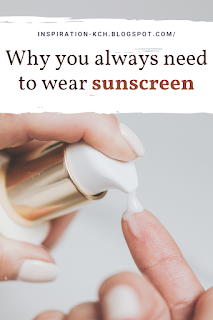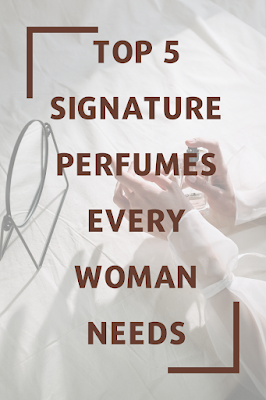The rule of Sun protection is: use five grams of sunscreen about a teaspoon and apply it on all parts exposed to the Sun. So in this post, we teach you everything you need to know about sunscreen. This post also comes with a quick disclaimer; it's meant purely informative this is not medical advice and if you're looking for medical advice always contact your doctor.
First we start with the question why should you use a sunscreen? Most of us think of the Sun as our friend. It helps plants grow, keeps us warm, and who doesn't love to lie on the beach on a sunny day? But for all of it's good qualities, the Sun can also be harmful in large amounts. That's why we invented sunscreen. The purpose of sunscreen is to shield the body from the Sun's ultraviolet rays, which have several harmful effects, including sunburn, aging, and skin cancer promotion. Ultraviolet rays or UV consist out of a few different wavelengths, most importantly UVA and UVB rays, which exert a variety of effects in the skin due to the absorption patterns of chromophores, the parts of the molecules responsible for their color. The primary two chromophores are hemoglobin, found in our red blood cells, and melanin, which gives our skin its pigment.
UVB only reaches to superficial levels of a skin and too much exposure to UVB can cause a sunburn. The intensity of UVB rays increases during summer time; explaining why we commonly experience sunburns in the summer and not during the winter. We also need to add that people with darker skin tones or people with tan skin tones are better protected against UVB rays and against a sunburn. But even if they don't burn, they still need to use sunscreen because unless they live in a cave, they're not immune to the effects of the Sun and they're not more protected against UVA rays. UVA rays can penetrate skin much deeper. This is why these rays can damage the DNA of some of our skin cells, causing them to grow uncontrollably and ultimately can even lead to skin cancer. This is why UVA protective sunscreen protects our skin from the three major types of skin cancer: basal cell carcinoma, squamous cell carcinoma and even melanomas. On a daily basis, the DNA in our cells is developing mutations and errors that are generally handled by machinery within our cells, but ultraviolet rays from the Sun lead to mutations that the cell may not be able to overcome, leading to uncontrolled growth and eventual skin cancer. The scariest thing about this is that usually you can't even see it happening until its too late. But if these concrete risks to our health are not enough to convince us to use sunscreen, there are aesthetic reasons as well. Along with cigarette smoking, sun damage is the leading cause of premature aging. UVA rays increase the aging process of the skin cells, it lowers the elasticity of the skin, which makes it sagging with wrincles and age spots and protection from this effect is what makes UV protective sunscreens the most effective antiaging agent. It's crucial to note here that the UVA rays coming from the Sun stay constant throughout all year. Their intensity does not change during summer time and this is why some dermatologists recommend that you use sunscreen every single day of the year.
This brings us to the next question: what type of sunscreen should you use? There are two major types of sunscreen: chemical and physical blockers. A chemical blocker absorbs the sun rays and from the moment that they are applied and their ability to absorb the sun slowly decreases. The upside of a chemical blocker is that they are easy to apply, they're transparent, so you don't see them when you apply your sunscreen and lastly the are more affordable. However they have some downsides: it takes about 15 minutes after applying it before they become active and they can cause skin irritations. Regarding the physical blockers now. After you apply them, they form a physical barrier reflecting the sun and they are made by zinc oxide or titanium dioxide. The same ingredients are primary components of diaper creams, where the goal is also to create a physical barrier. Historically, they haven't always been easy to apply and were conspicuously visible on the skin, but new formulations have made this less of an issue. The upside of physical blockers is that they work immediately after you apply them, they cause less skin irritations and they have a higher UVA protection. On the downside though,they often are highly visible after you apply them as they leave a white cast. Another downside is that they're quite expensive.
How does SPF matter? SPF stands for Sun Protective Factor which is a measure of the protection against UVB rays, but practically tells you how well you are protected against a sunburn and a sunburn only. So if you're using an SPF of 30 this allows you to be exposed to 30 times more UVB rays than you would be without using the sunscreen if you're using an SPF of 50 this enables you to be 50 times longer in the Sun without a sunburn and so on. Here it is important to note that SPS says nothing about protection against UVA rays and therefore it says nothing about protection against skin cancer and skin aging. Thus, you should always opt for broad spectrum sunscreens that provide UVA protection propotional to UVB protection. So what's the best kind of sunscreen? Everyone will have their preference, but look for the following things: broad spectra, SPF of at least 30, and water-resistant. A light moisturizer with SPF 30 should be good for daily use.
Which brings us to some practices you can do to keep your skin safe. Use a sunscreen with at least an SPF of 30 and make sure it also protects you from UVA rays. Use five grams of sunscreen (about a teaspoon) and apply it on all parts exposed to the Sun, don't forget your ears, neck and decolletage. Apply at about 15 minutes before you go outside and make sure to reapply it every two to three hours when you spend time outside or every time that you took a swim or you sweat. Also car windows block UVB, the burn rays, but not UVA, the aging rays. It is recommended to use sunscreen daily, but you should pay special attention before prolonged sun exposure or when at the beach or among snow since the reflectivity of water and ice amplifies the Sun's rays. In addition when you exercise you could also wear ultraviolet protective clothing. It is also recommended you stay as much as possible in shaded areas and avoid the sun at peak hours which are from 10 a.m. to 4 p.m., this is when the Sun shines brightest and the UV radiation is the most intense and harmful.
Lastly, if you have any children younger than 6 months make sure that they are not exposed to the bright sun. The ultraviolet rays can be extra harmful for them, because their immune system it's not fully developed yet as well as their skin.
XO








Comments
Post a Comment